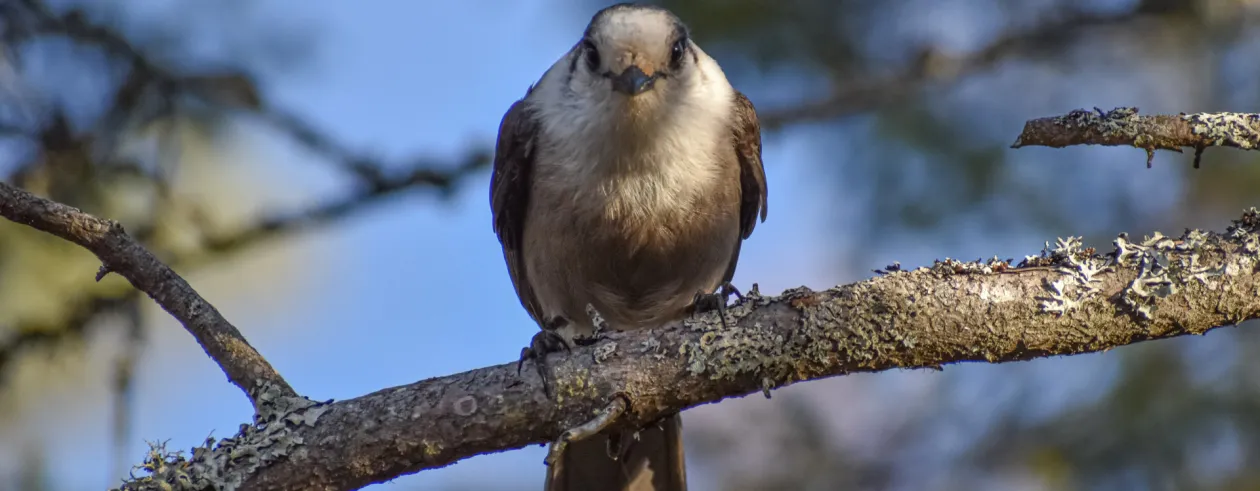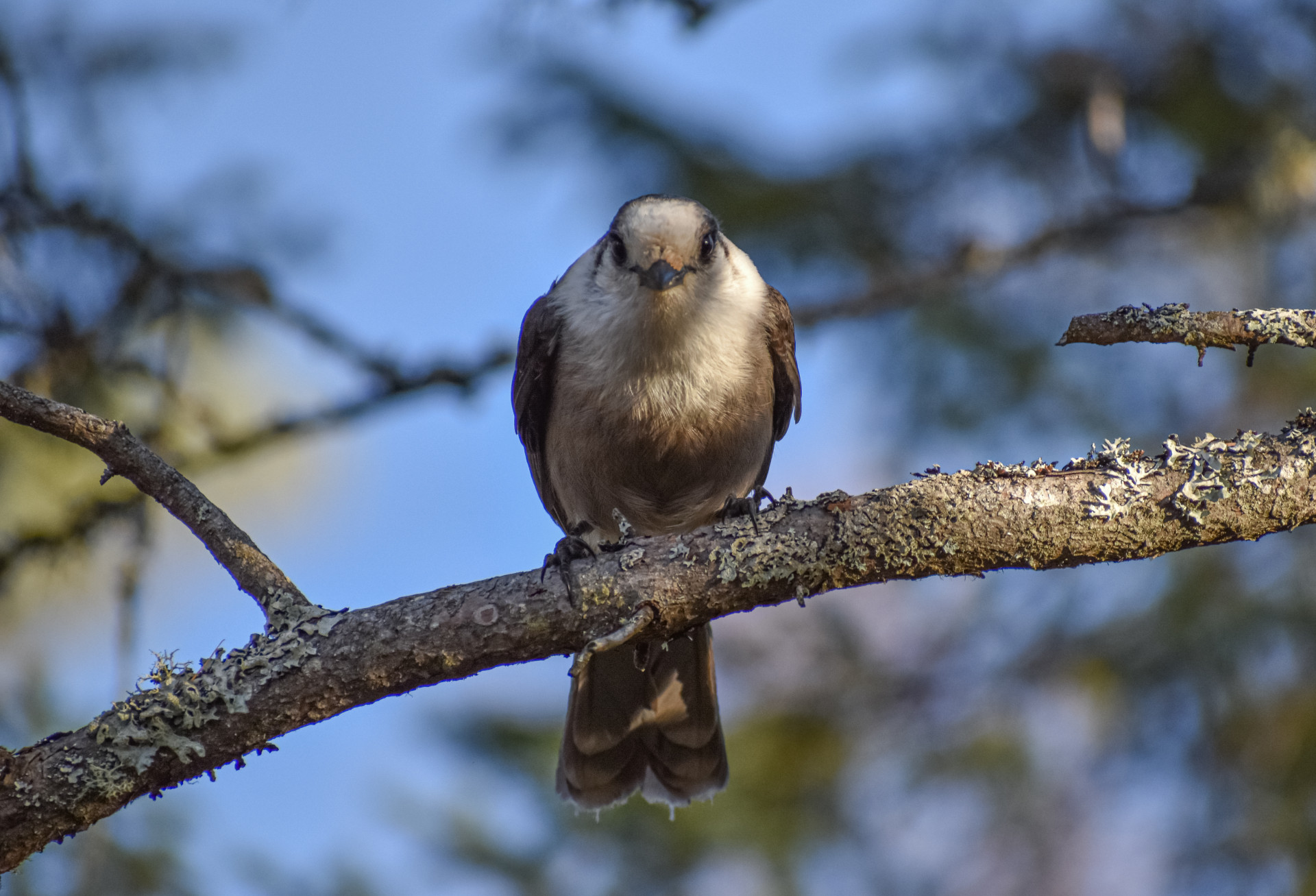
One of the most common misconceptions about birding is that it’s just an activity for older people with dorky hats and binoculars. I’m here to tell you that’s only half true.
Hi. My name is Janelle and I’m a 31 year old birder who has been birding since I was 2 years old. Yeah, I wear dorky hats sometimes and, yeah, I always have at least one pair of binoculars within an arm’s reach, but birding can be an activity for all ages and all levels of nerds, even those who don't realize they are nerds yet! And birding near Tupper Lake can be really exciting because there are opportunities to observe species that are not commonly found elsewhere in New York.
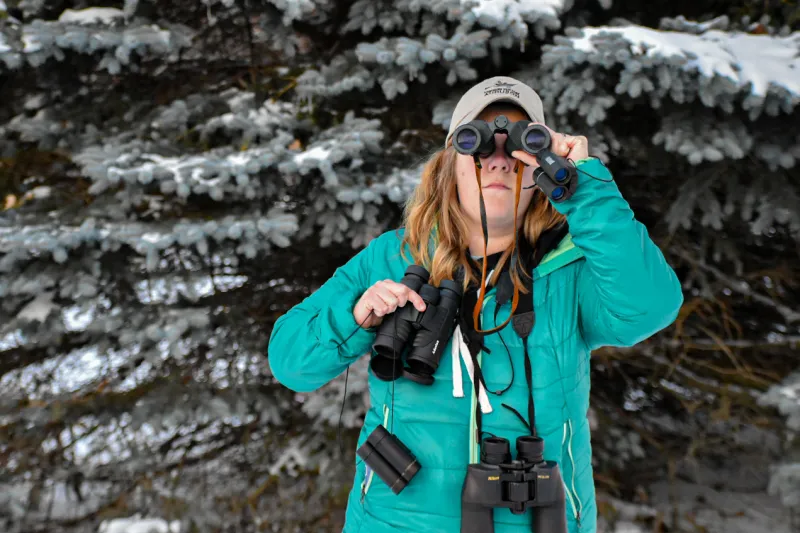
Tupper Lake is not “for the birds,” but it’s definitely for the birds! (I promise, the humor only gets worse from here.)
Foolish forest chickens
It’s not really a secret: I love chickens. Scroll through my text messages (see, I’m young and hip) and you’ll find plenty of comments from my friends about how I should be raising chickens. So, naturally, the elusive Spruce Grouse, or “forest chicken” or “fool hen,” is of particular interest to me. I remember my first time learning about this species like it was yesterday.
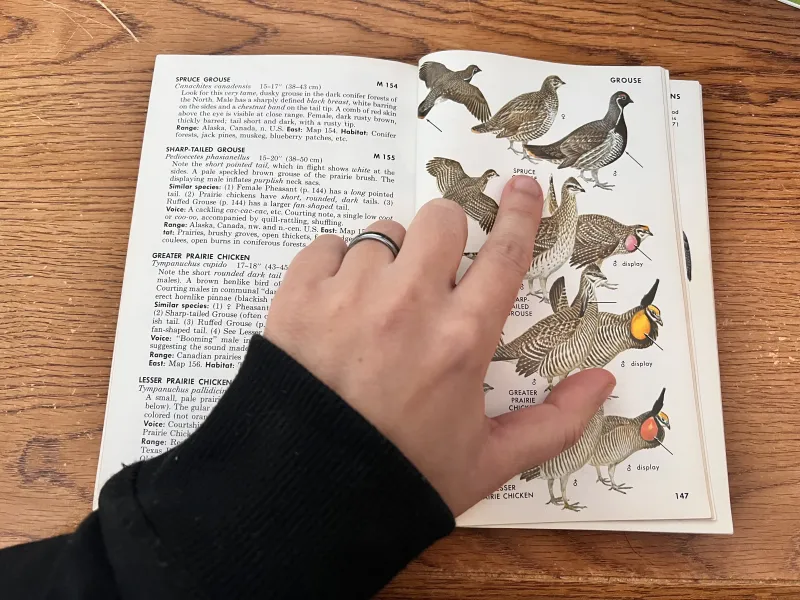
Picture it: the year was 2008 and I was fresh into my undergraduate college career. Bright-eyed and full of hope, I set out with a biologist to see if we could locate a Spruce Grouse. We walked through bogs, between stick-y pine branches, and under a clear blue sky. Unfortunately we never found a Spruce Grouse, but that is probably because these birds are super rare. In fact, they are endangered in New York.
Spruce Grouse are true northern birds. They live in boreal (northern) forests. While this species is doing alright elsewhere in its range (think: Canada and Alaska), in New York there are serious issues like habitat loss and misidentification that pose serious threats. Boreal forests in the Adirondacks are fragmented, meaning Spruce Grouse often end up dead in roads. To make matters worse, at quick glance, they appear very similar to Ruffed Grouse, which is a popular species to hunt and has a considerable population in the Adirondacks. To make matters even worse still, Spruce Grouse are often called fool hen because they are notoriously slow-witted and often don’t flee from danger quick enough. Needless to say, their population in the Adirondacks is not very strong. In 2006, the Department of Environmental Conservation estimated that there were probably less than 75-100 individuals in the state.
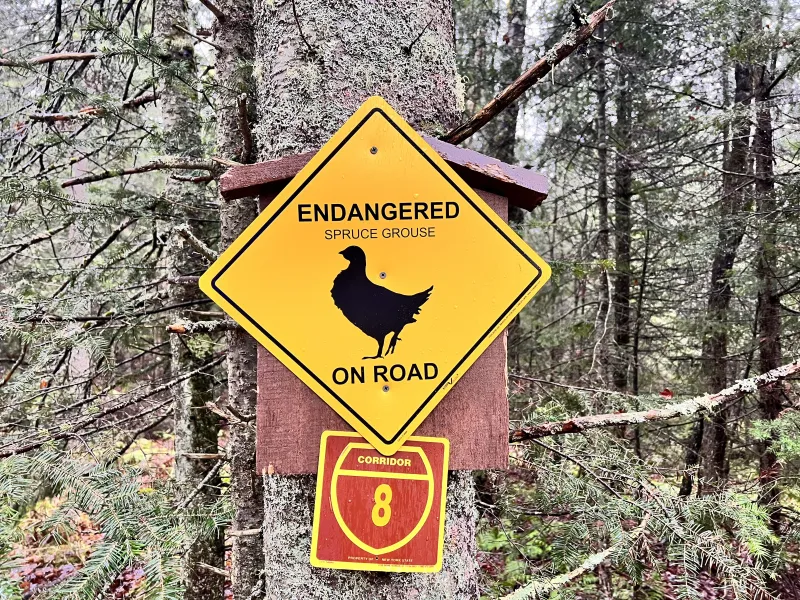
Modern problems require modern solutions, and that’s where Northern New York Audubon comes into play. This local chapter of the National Audubon Society is raising funds in partnership with Raquette River Brewing to help fund projects that study and help protect birds in our area, which can include the Spruce Grouse. Raquette River Brewing and Northern New York Audubon released the Spruce Tip IPA back in December of 2021. This one-of-a-kind beer is brewed with spruce tips and has a specially designed label complete with information about the unique Spruce Grouse, which dines on spruce needles. Next time you’re reading your beer can labels, you could also be learning how YOU can help endangered species! I think we can all raise a pint to that.
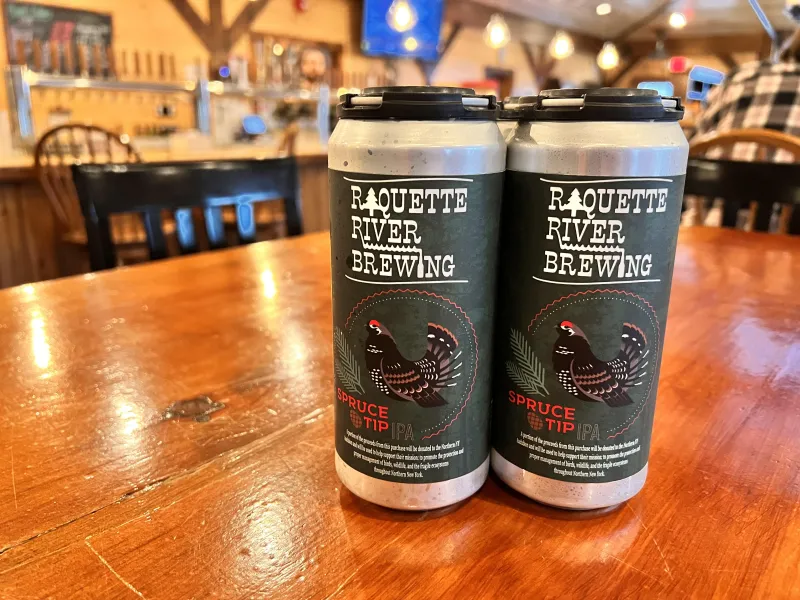
But birding is not about drinking beer! It’s about seeing and hearing the birds themselves. There are a few places near Tupper Lake where you might get lucky and find a Spruce Grouse. Massawepie is one of them. The Paul Smith’s College VIC is another good place to search, though they aren’t seen often there. Located near Paul Smith's College VIC is Blue Mountain Road, a grouse haven. This road has signs for Spruce Grouse everywhere, so it's worth a short trip from Tupper Lake. In summer, when access is open, Spring Pond Bog is another good location to check out (just be sure to get permission from The Nature Conservancy first). The closest I’ve come to finding a Spruce Grouse was at Spring Pond Bog, but all I found were “droppings.” One thing I love about birding is that you truly never know what you are going to discover; the mystery intrigues me and keeps me going. Even if there's only poop at the end of the trail.
The rest of the flock
Okay, there are more birds in Tupper Lake than Spruce Grouse. Honestly, there’s quite a lot of diversity. Other boreal species that are intriguing to birders are Canada Jays and Black-backed Woodpeckers. Sabattis Bog is a great place to observe these incredible birds. The best part? You don’t even have to leave the car! Sabattis Bog is located on Sabattis Road, and is some of the best car-birding around.
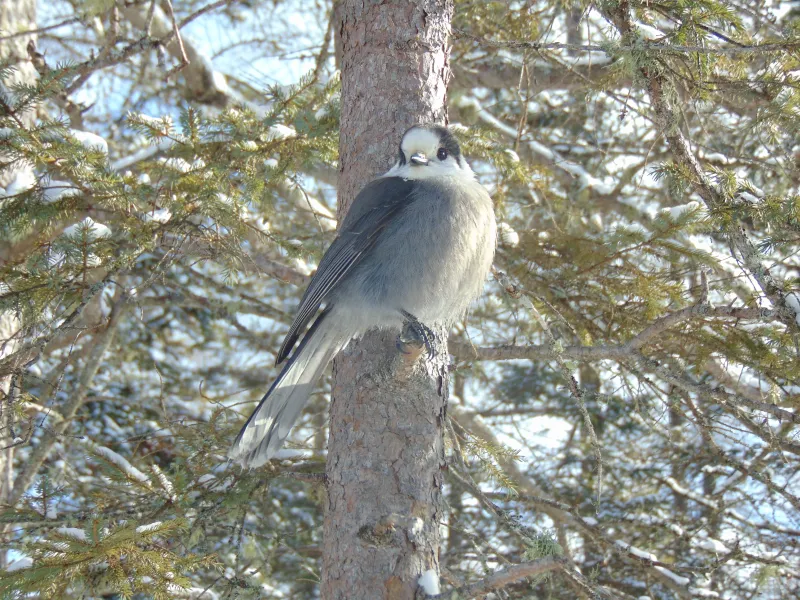
Canada Jays are bizarre birds. For one, they are naturally inquisitive and will likely come check you out (because they have a strong drive to find human food). These birds love the cold, almost as much as we do as Adirondackers. They breed in February and March (when it’s absolutely freezing), and this cold-weather bonding must solidify their relationships because the birds will stay together as long as they both shall live. (This is a love story worthy of a Hallmark movie, don’t you think?)
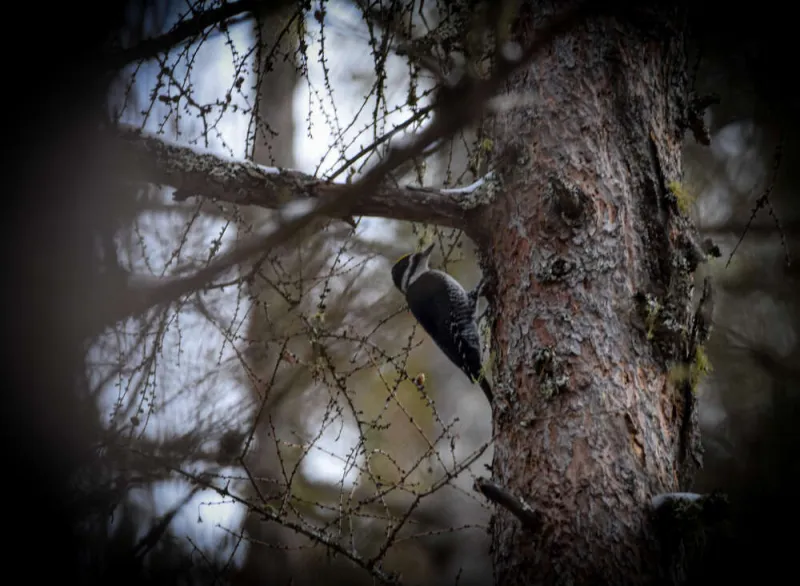
Black-back Woodpeckers, like their woodpecker relatives, forage in trees. They prefer dead trees (usually ones that have been burned) and will typically stay in one location drumming away for a long time, longer than most other woodpecker species. What that means for birders is there’s a higher likelihood of locating the bird!
Fly high, aspiring birders!
Aside from these three species, there is so much more to birding in Tupper Lake. Common Ravens and Black-capped Chickadees can be found all year round, but that doesn’t mean their calls are any less exciting. Chickadees are, well, everywhere, making it possible for birders to locate this species almost anywhere, which is very cool. To know that the birds in your backyard can also be found in wild places like the Adirondacks is a poignant reminder that nature and wildness can be found all around. It’s a great connection.
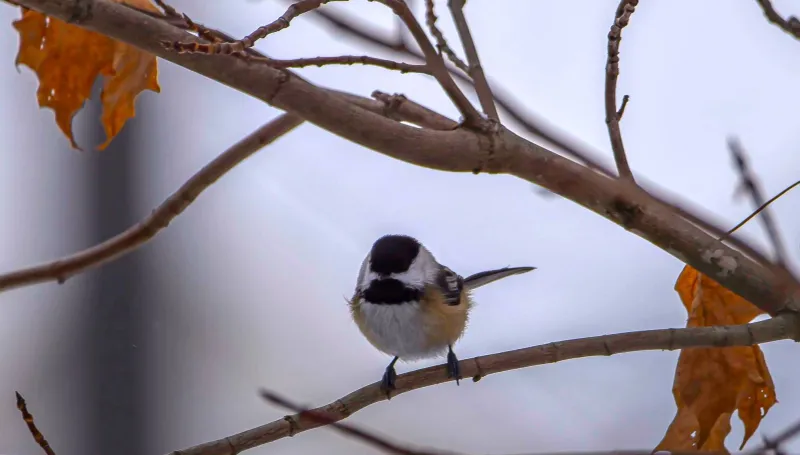
In addition to all the chickadees, Spruce Grouse, jays, and woodpeckers, it’s also possible to find Bald Eagles in Tupper Lake, even in winter! These charismatic birds hunt fish, so they generally tend to stick to open waters. As long as the lakes are not completely frozen, there’s a chance you’ll see an eagle! (The causeway between Simon Pond and Big Tupper Lake is a perfect spot!)
With that, I hope you have a spectacular time birding in Tupper Lake! With so much to discover, the opportunities are as abundant as Cedar Waxwings on ornamental fruit trees in winter. You might as well book a hotel room and go birding for a week. That’s my professional opinion, at least.
